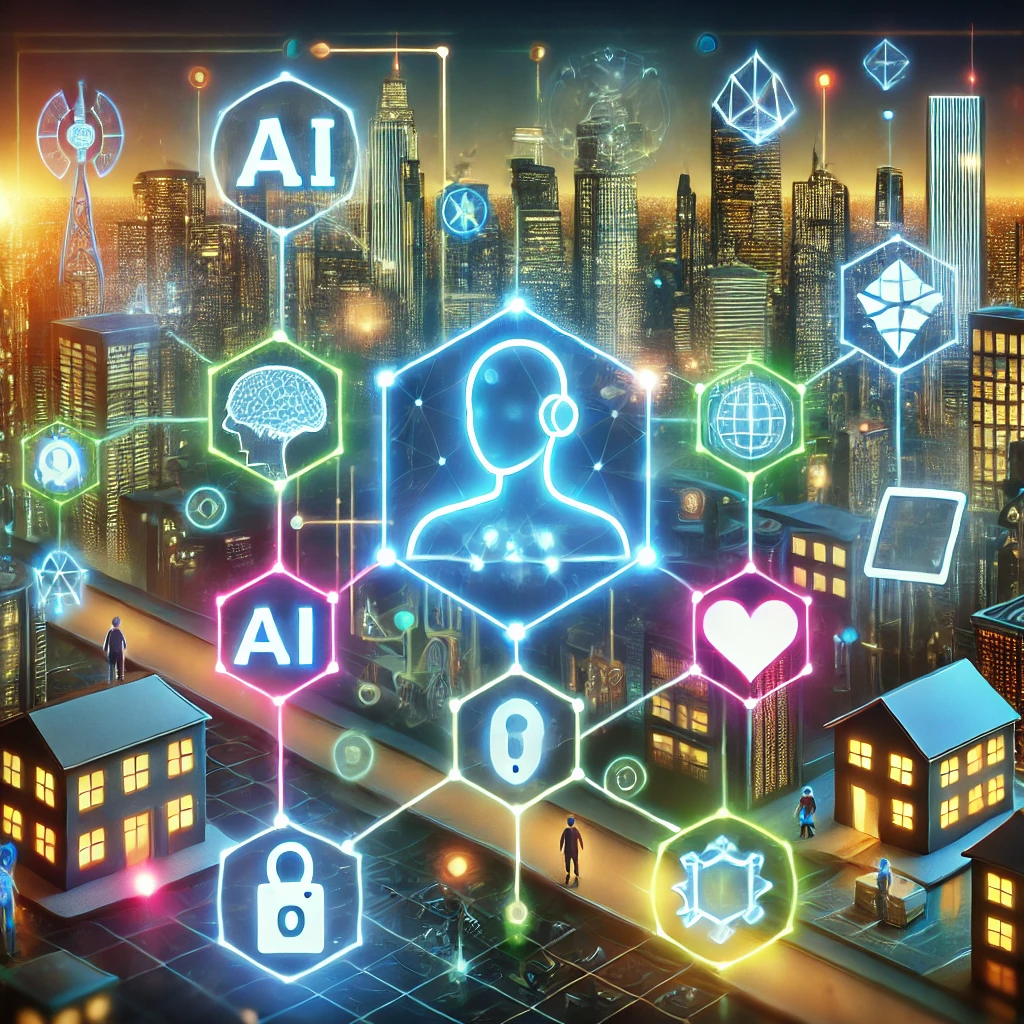Technology has come a long way, from the invention of the wheel to the dawn of the internet. But today, we’re witnessing something even more extraordinary—a technological revolution that is transforming every aspect of our daily lives. From the way we communicate and work to how we entertain ourselves and manage our health, emerging technologies are unlocking new opportunities, reshaping industries, and redefining the future.
In this blog, we’ll explore some of the most significant emerging technologies and how they are influencing our lives. These developments are not only creating convenience but also addressing critical challenges and enriching the human experience in ways that were once the realm of science fiction.
1. Artificial Intelligence and Machine Learning
Artificial intelligence (AI) has been a buzzword for years, but now it’s making its way into every corner of our lives. Whether you’re using a voice assistant like Alexa or Siri, relying on predictive text, or marveling at Netflix’s uncanny ability to recommend the perfect show, AI is quietly working behind the scenes.
Machine learning, a subset of AI, enables systems to learn and improve without being explicitly programmed. From virtual personal assistants to complex data analysis for businesses, AI-powered algorithms are optimizing efficiency in countless fields. In healthcare, AI systems can analyze medical images, predict patient outcomes, and even assist in surgeries, saving lives and improving health outcomes.
In the workplace, AI is automating repetitive tasks, freeing up human employees to focus on more complex, creative problems. The role of AI in industries like manufacturing, finance, and customer service is growing rapidly, marking a turning point in how businesses operate.
2. 5G Technology and the Internet of Things (IoT)
We’ve all heard the hype surrounding 5G technology, but its real potential goes far beyond faster internet speeds for streaming or downloading content. The introduction of 5G is set to revolutionize how devices connect and interact in real-time, enhancing the capabilities of the Internet of Things (IoT).
IoT, the network of interconnected devices that communicate with one another, is already embedded in smart homes, wearables, and even industrial systems. With 5G, this interconnectedness will reach new heights, making everything from self-driving cars to smart cities a reality. Imagine streetlights that automatically adjust to traffic conditions, or healthcare devices that monitor patients remotely and instantly communicate critical data to healthcare providers.
5G will power the next generation of connected devices, enabling everything from real-time virtual reality gaming to seamless telemedicine consultations. It’s the bedrock that will support future technologies like smart cities, autonomous vehicles, and next-gen robotics, all of which are poised to make our lives more convenient and efficient.
3. Blockchain and Cryptocurrencies
Blockchain technology, initially developed to support cryptocurrencies like Bitcoin, is now being leveraged in a variety of industries, from finance to supply chain management. What makes blockchain unique is its ability to create a decentralized, transparent, and secure way of recording and verifying transactions.
In finance, blockchain technology is revolutionizing how we handle money. Cryptocurrencies have gained popularity as an alternative form of currency that operates outside traditional banking systems. Decentralized finance (DeFi) platforms are allowing users to trade, borrow, and lend without intermediaries, potentially reducing fees and increasing accessibility.
Beyond finance, blockchain is enhancing supply chain transparency, securing personal data, and even ensuring the authenticity of products. For example, luxury goods companies are using blockchain to verify the origin and authenticity of their products, reducing counterfeiting and ensuring ethical sourcing.
4. Augmented Reality (AR) and Virtual Reality (VR)
AR and VR technologies are reshaping entertainment, education, and even work. Augmented reality overlays digital information on the physical world, while virtual reality immerses users in a completely digital environment. Both have exciting applications that extend far beyond gaming and entertainment.
In education, AR and VR are offering new ways to engage students. Imagine learning about the solar system by virtually exploring distant planets, or practicing complex surgical procedures in a VR simulation before performing them in real life. These immersive experiences enhance learning by making abstract concepts tangible and interactive.
In the retail space, AR is being used to let customers virtually “try on” products like clothes, accessories, or even furniture before purchasing. Similarly, businesses are using VR to train employees in highly specialized fields, allowing them to practice and perfect their skills in a risk-free environment.
As this technology becomes more affordable and widespread, it will further integrate into our daily lives. For example, some companies are already experimenting with AR-enhanced mirrors in dressing rooms, while others are developing VR office spaces for remote collaboration.
5. Wearable Technology and Health Innovations
Wearable technology, including fitness trackers, smartwatches, and medical devices, is not new, but it’s evolving rapidly. Modern wearables go beyond tracking steps or monitoring heart rates—they are turning into sophisticated health monitoring devices.
Smartwatches can now detect irregular heart rhythms, track sleep patterns, and even measure blood oxygen levels. Wearable ECG monitors can predict heart attacks, while glucose monitors help manage diabetes. These devices are not only improving personal health but also enabling doctors to monitor patients remotely, catching potential problems before they become serious.
The rise of telemedicine, accelerated by the COVID-19 pandemic, has made wearable technology more critical than ever. Patients can now consult with their doctors via video calls and share real-time health data, reducing the need for frequent in-person visits.
6. Smart Homes and Personalization
Smart homes have moved from being a luxury to a mainstream reality for many people. Thanks to voice-activated assistants, smart thermostats, security systems, and automated lighting, people can control their home environments with just a tap on their smartphone or a simple voice command.
These systems learn from user behavior and adjust settings based on preferences, creating a truly personalized living experience. For example, a smart thermostat can learn your daily routine and adjust the temperature accordingly, while smart lighting systems can sync with your daily schedule to save energy and provide better ambiance.
The fusion of IoT and AI allows for unprecedented levels of personalization. In the future, homes will become even more intuitive, catering to individual preferences for everything from entertainment to energy consumption.
7. The Future of Technology in Everyday Life
The integration of emerging technologies like AI, 5G, blockchain, AR/VR, and wearable devices is transforming everyday life in ways that go beyond convenience. These technologies are solving problems, enhancing productivity, and improving overall quality of life. As they continue to evolve, we can expect even more breakthroughs that will redefine how we interact with the world.
So, as you check your smartwatch, adjust your smart thermostat, or use AR to preview Halloween phone covers online for the spooky season, remember—you are living in the future. And this is just the beginning.
These technologies are not only making life easier but also paving the way for future innovations. From enhancing healthcare to making our homes smarter, the future of technology is bright and promises even more incredible advancements in the years to come.



